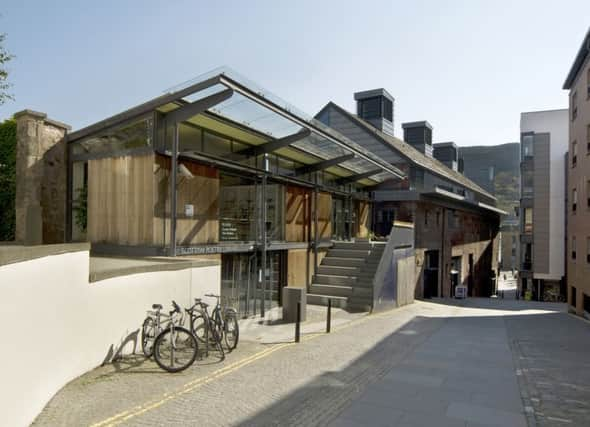Malcolm Fraser on the Scottish Poetry Library


I’ve been their architect for 20 years, first for alterations to their old home but then building them a complete new one, down a close off the Canongate.
The new building opened in 1999 as the world’s first purpose-built national poetry library (we forget how innovative we can sometimes be in Scotland).
Advertisement
Hide AdAdvertisement
Hide AdIt was, and is, a much-loved piece of architecture: lots of awards, and commendations from architectural historians as well as those who appreciate modern architecture.
If you type “100 best modern Scottish buildings” into Wikipedia it sits at a dizzying number 9 – ninth best in Scotland and the third best post-war building in Edinburgh.
Most importantly, ordinary users like it – how full of light it is, how sweetly it’s connected to its historic environment and the sloping close outside and how the art of poetry imbues it, from its overall form down to its smallest detail.
The building is now 15 years old and the success of the Library means they need to grow. I drew a proposal for the library’s board that radically re-organised the interior of the building, gaining a much more welcoming and flexible central space, a large new meeting room and gallery (which would further animate the sloping close) and space for a whopping 80 per cent more books.
This met and greatly exceeded what their brief asked for; so imagine my bewilderment when the board’s chair dismissed me, and went out and interviewed for new architects.
Seeing the resultant planning application I now understand why.
There’s a school of thought that says that change needs to look big and bold, so that a radical internal re-organisation may well answer the brief, but does not deliver sufficient aggrandisement.
Type “Edinburgh Planning Search” into your machine and “Crichton’s Close” into the search-line, then open the “Design Statement” document and you will see the result of such muddled thinking: the front of the library destroyed with the forestair, courtyard reading area and associated artwork lost, replaced by an extension right across the front of the building.
Advertisement
Hide AdAdvertisement
Hide AdThe perspective miss-represents the steepness of the site, flattening it out so that the awkwardness of how the proposed extension would meet the steep slope is blunted. But it still shows the banality of the proposal – fine for a corner shop but not nearly good enough for a significant cultural institution in the Edinburgh World Heritage Site, and no justification for the loss of the forestair and courtyard reading area.
Will they build it? Well it’s great the support that’s given to the arts in Scotland. I’ve been part of that, winning funding, and building buildings, for dance, drama, art and storytelling, as well as for Scotland’s literature community.
But who’s to care for the art of architecture in all this?
Creative Scotland will be asked to fund this work and, as I’ve said, it’s great to support the art of poetry.
But the library building is arguably Creative Scotland’s most effective single investment in the art of architecture – are they going to now fund its despoilment?
Who then cares for the art of architecture? Well one slightly-scary answer might be the planning system – or, at least, us, through our ability to object to proposals that damage it.
If you too are concerned at what is proposed write to the planners, or go to the “comment” section of the planning search site.
There’s people from the literature community there, saying how nice this will be for the art of poetry. Please tell them what you think this will do, for the art of architecture.
• Malcolm Fraser was born in Edinburgh and founded his architectural practice in the city in 1993.